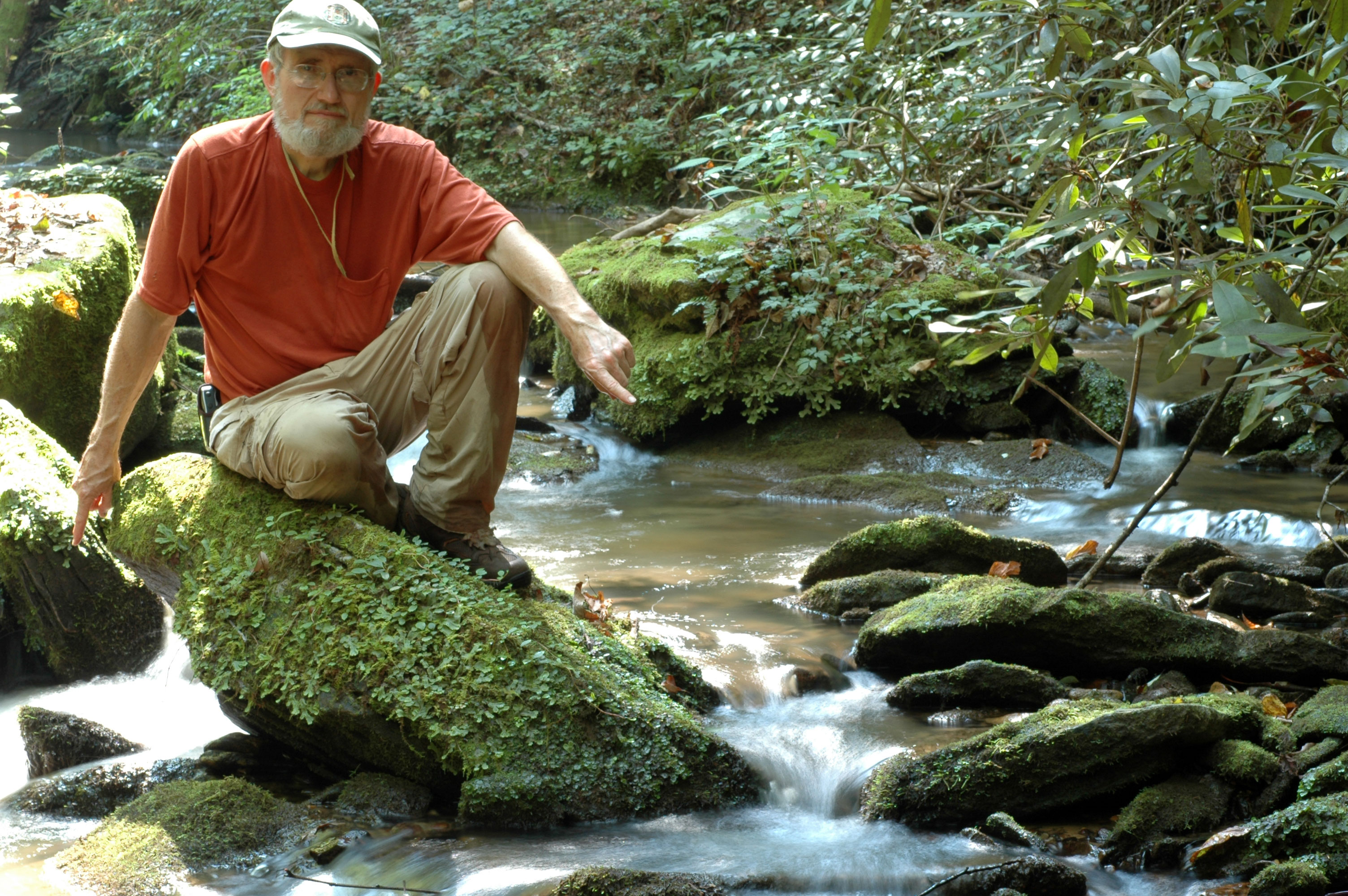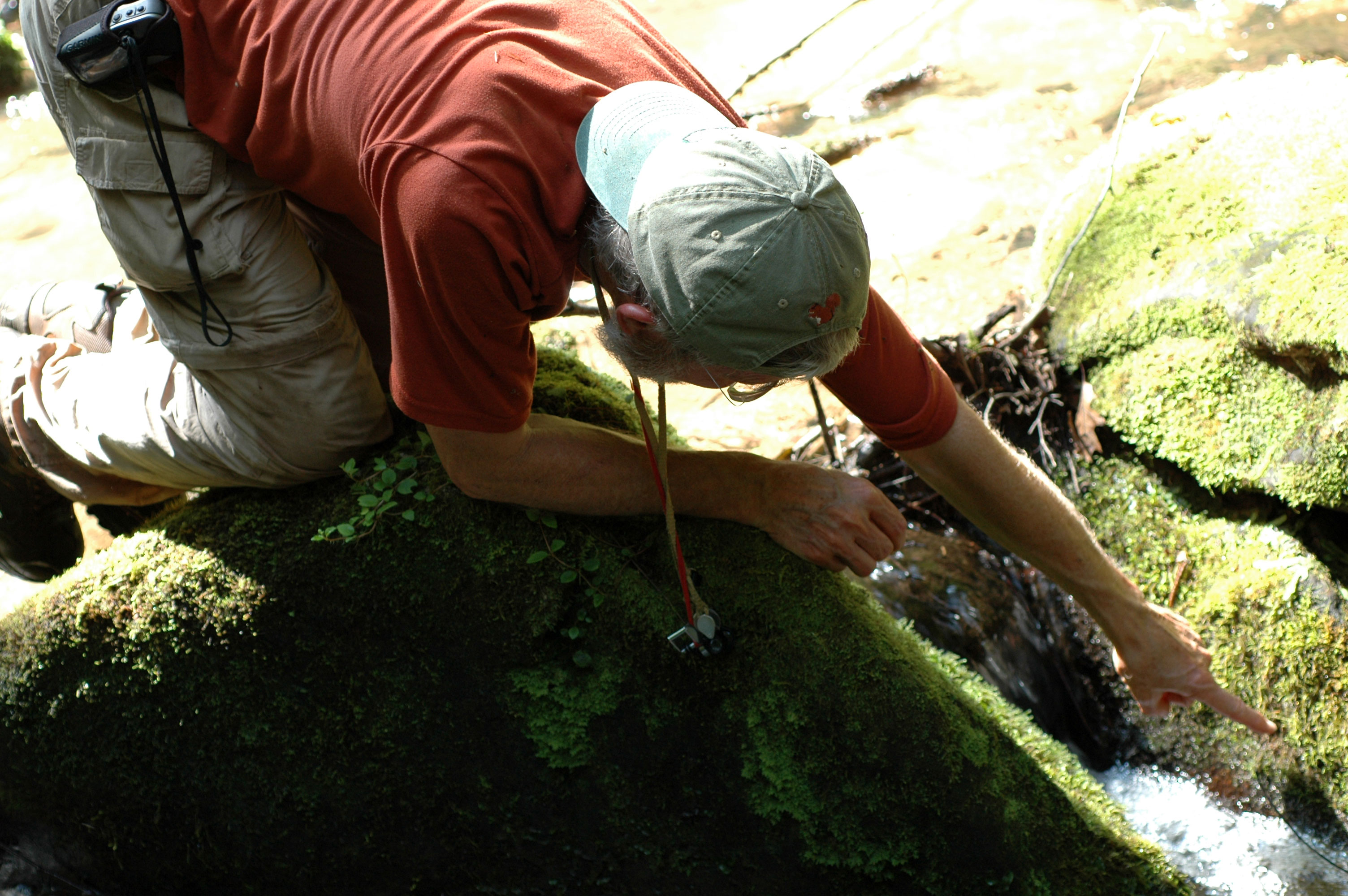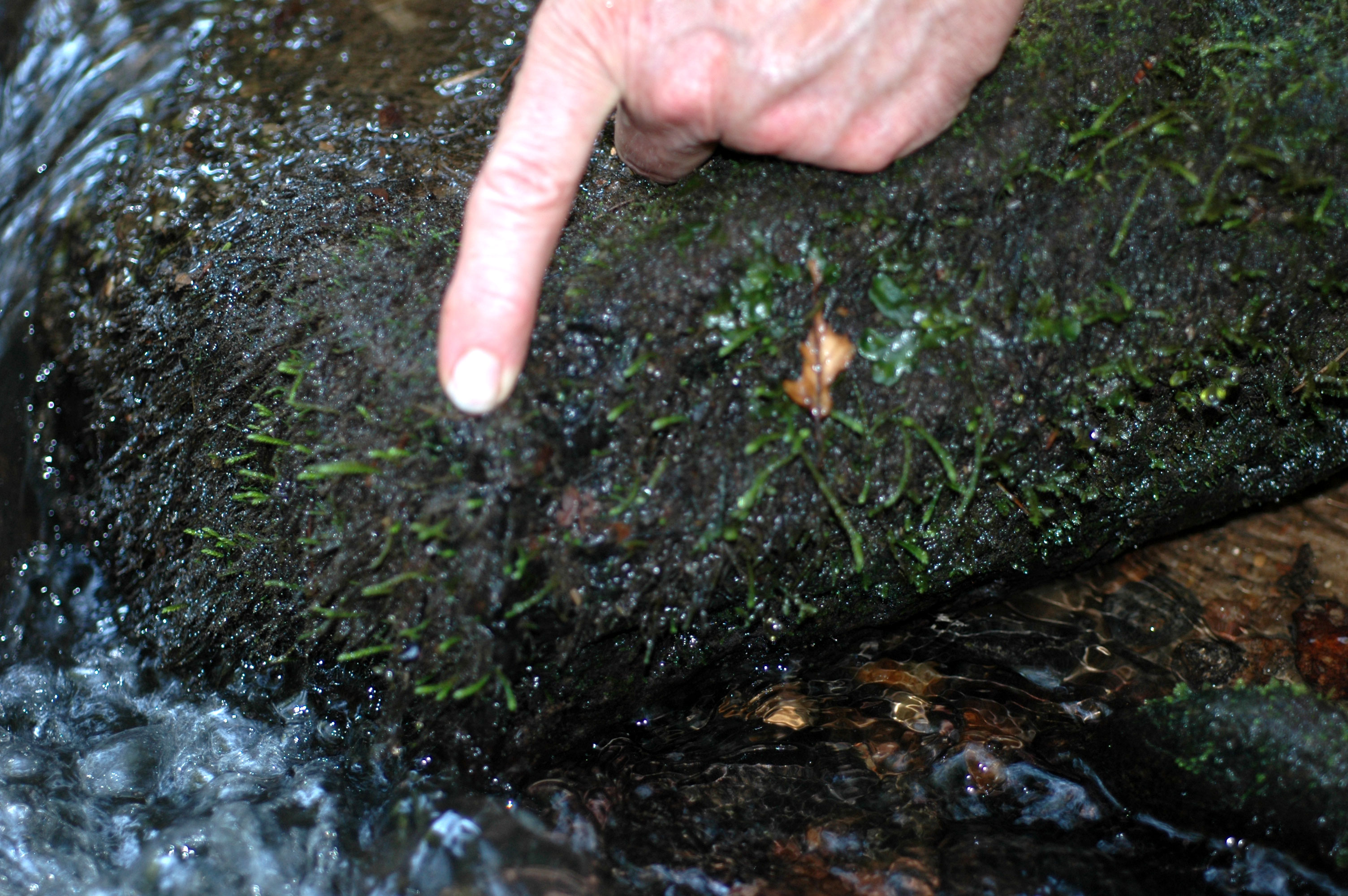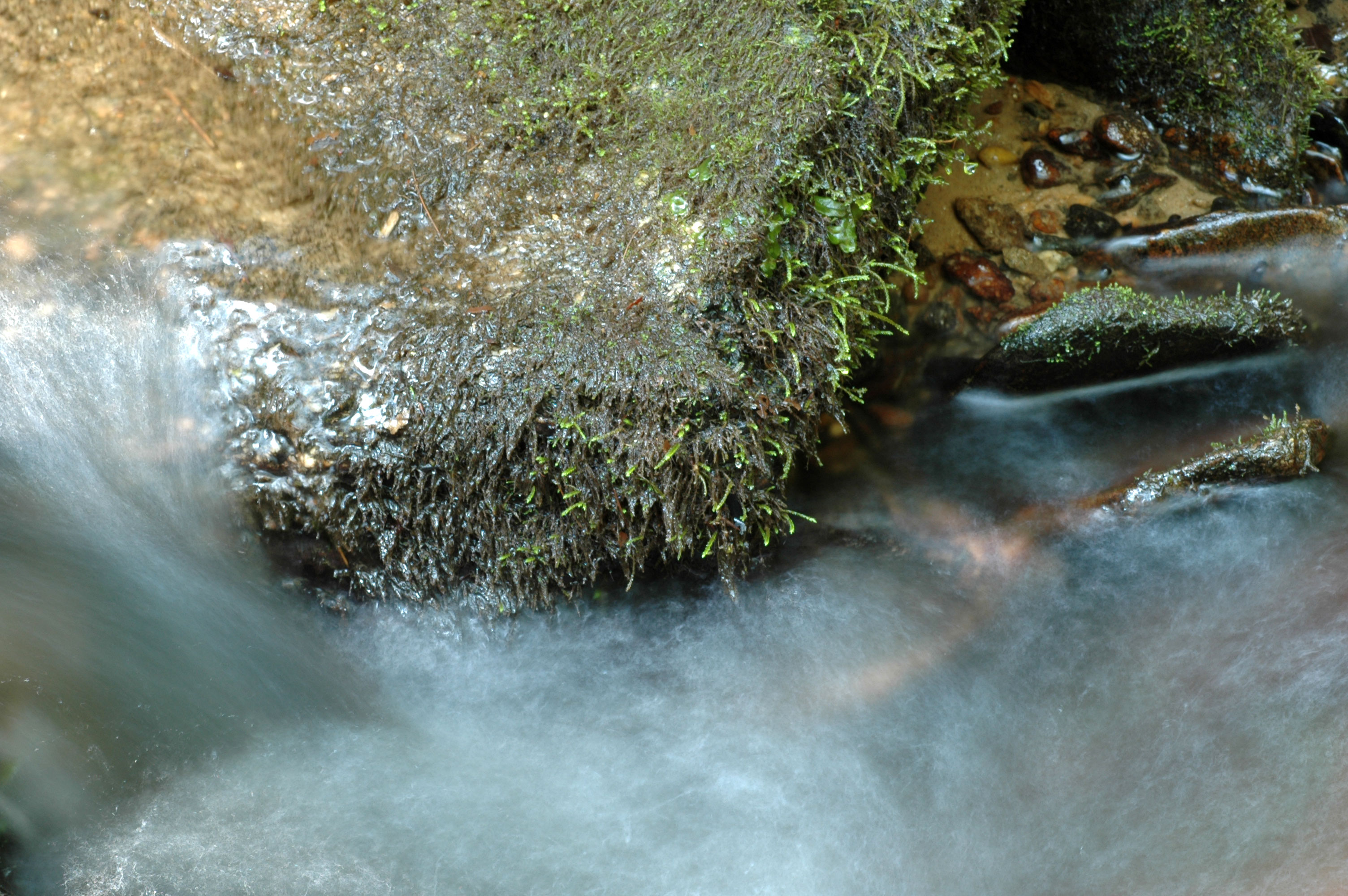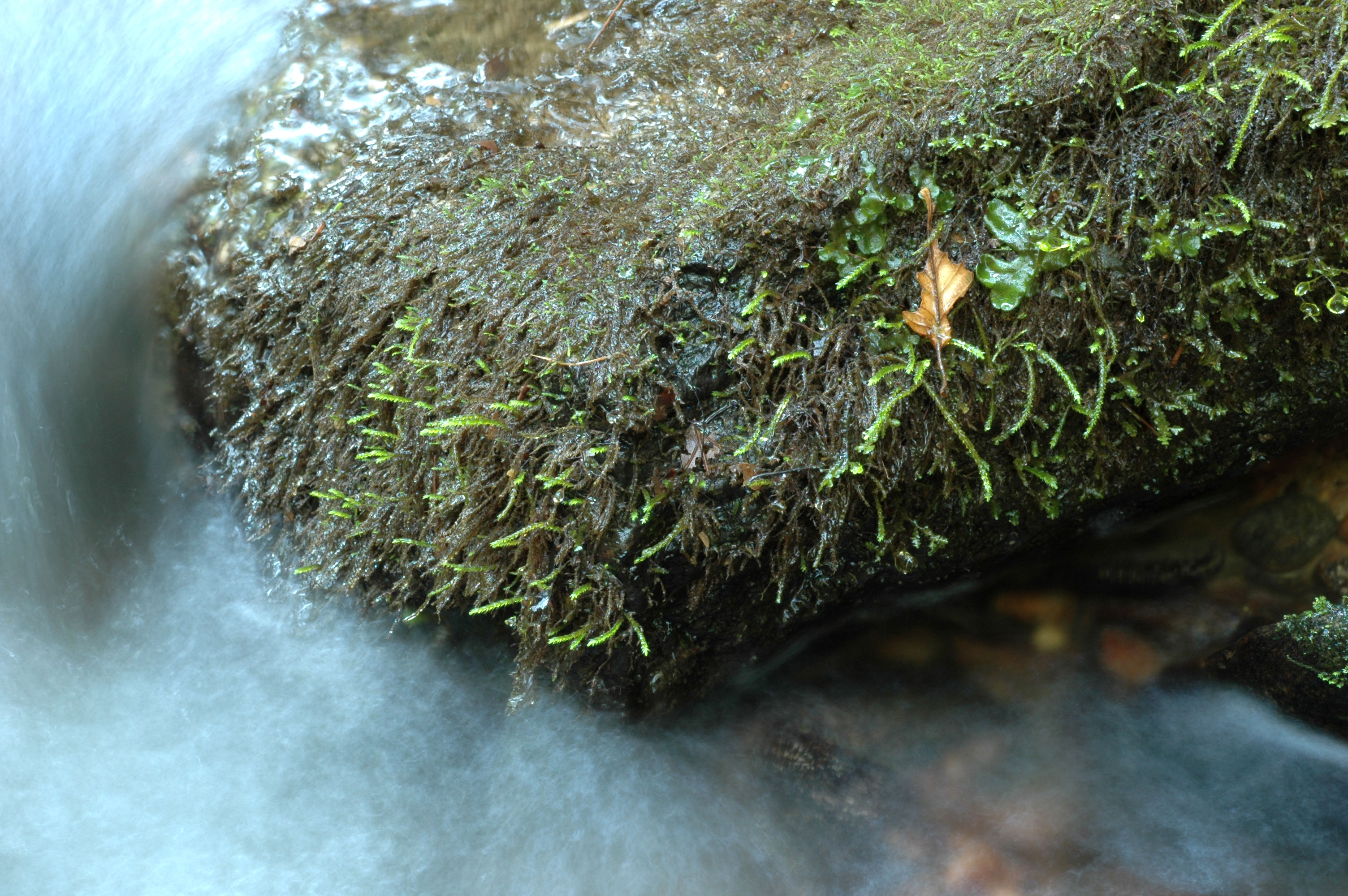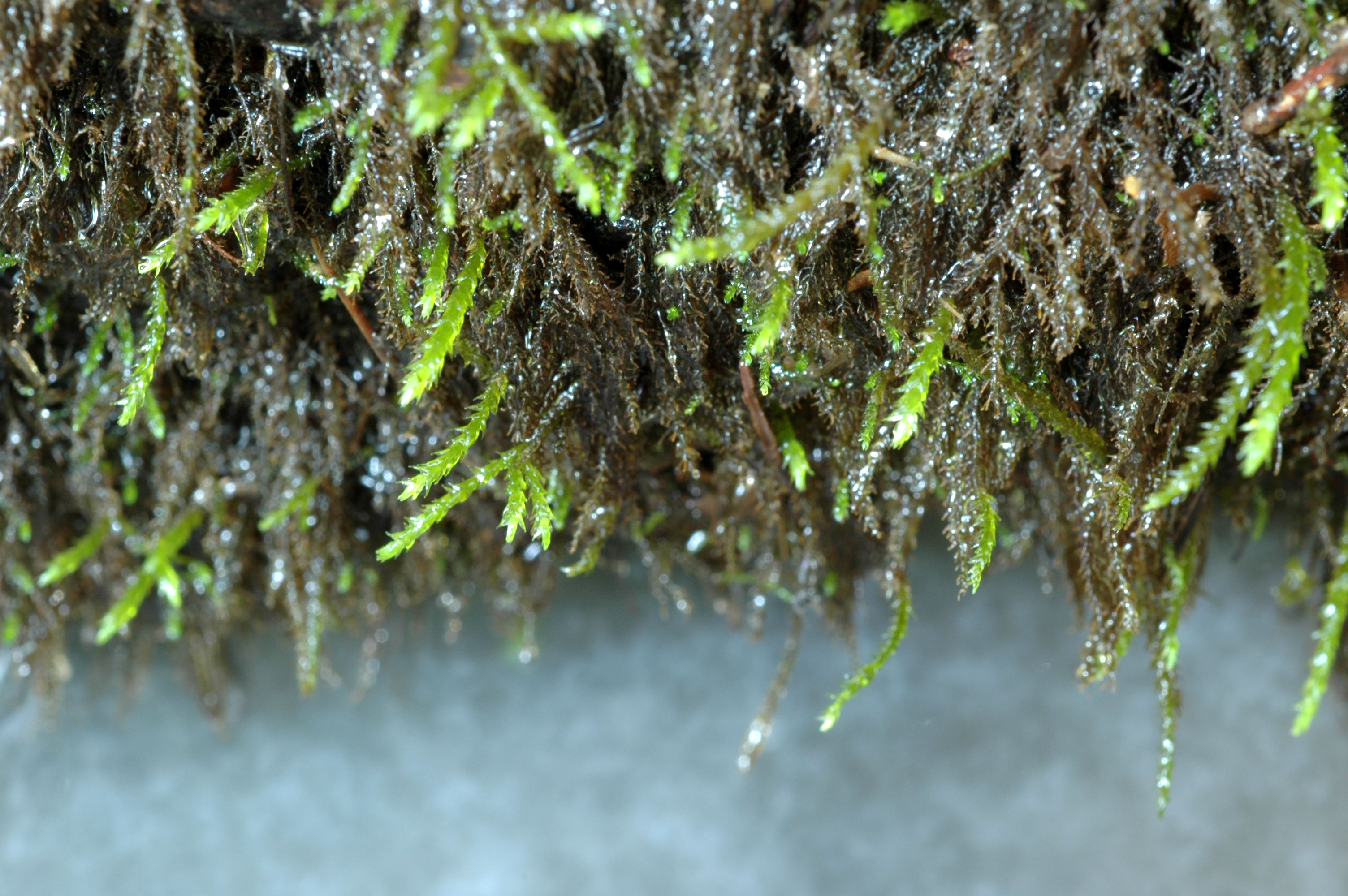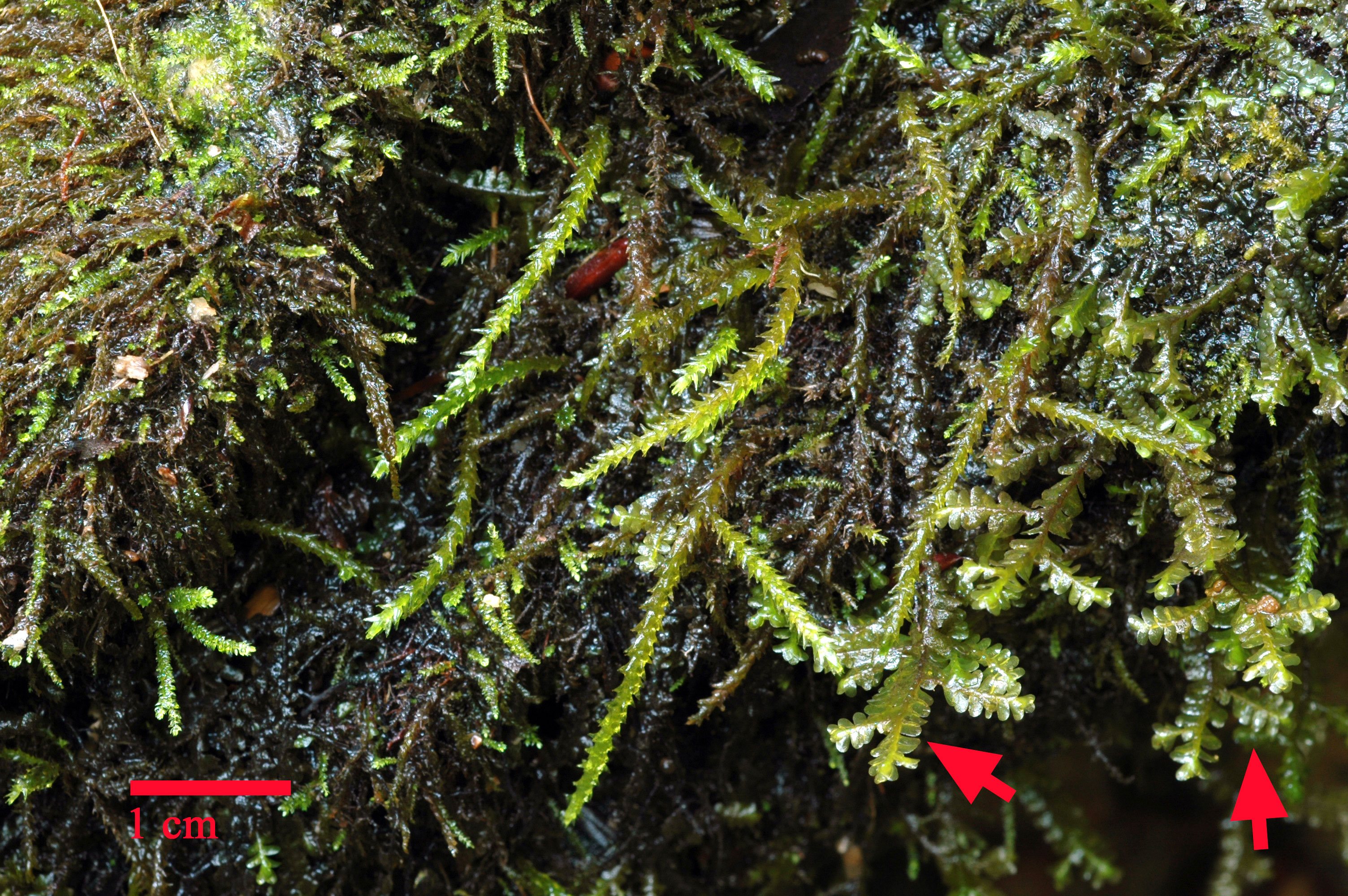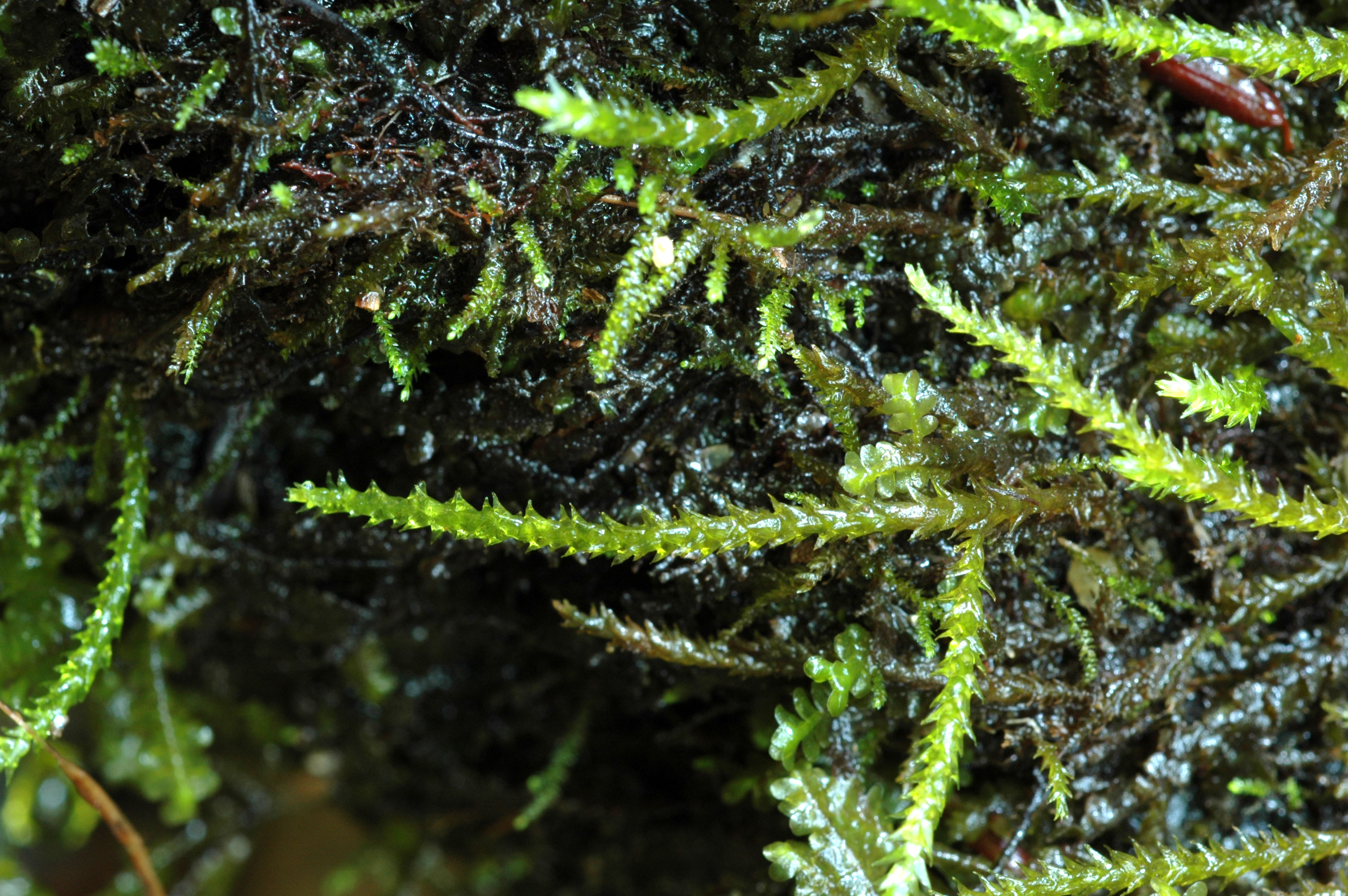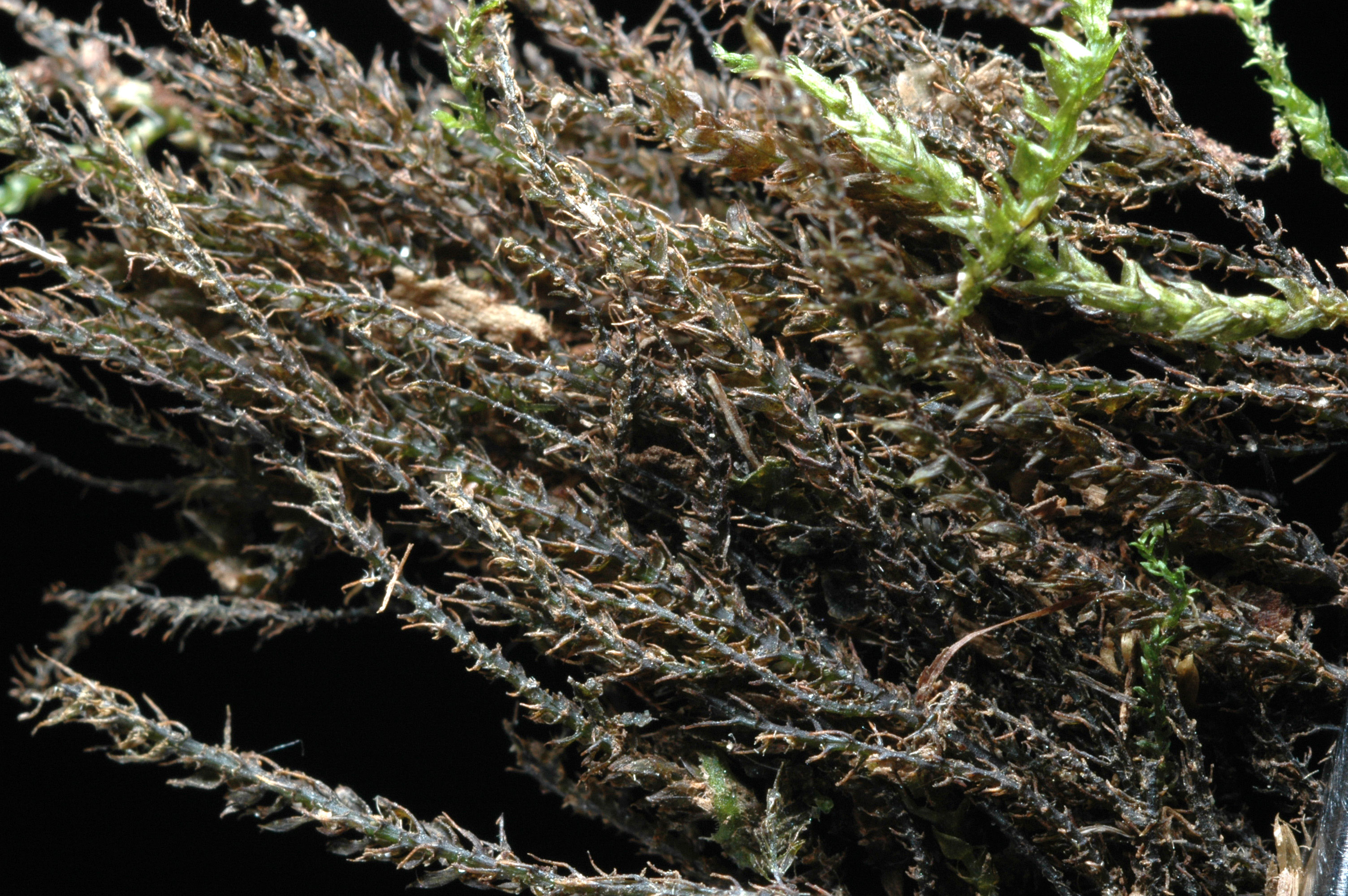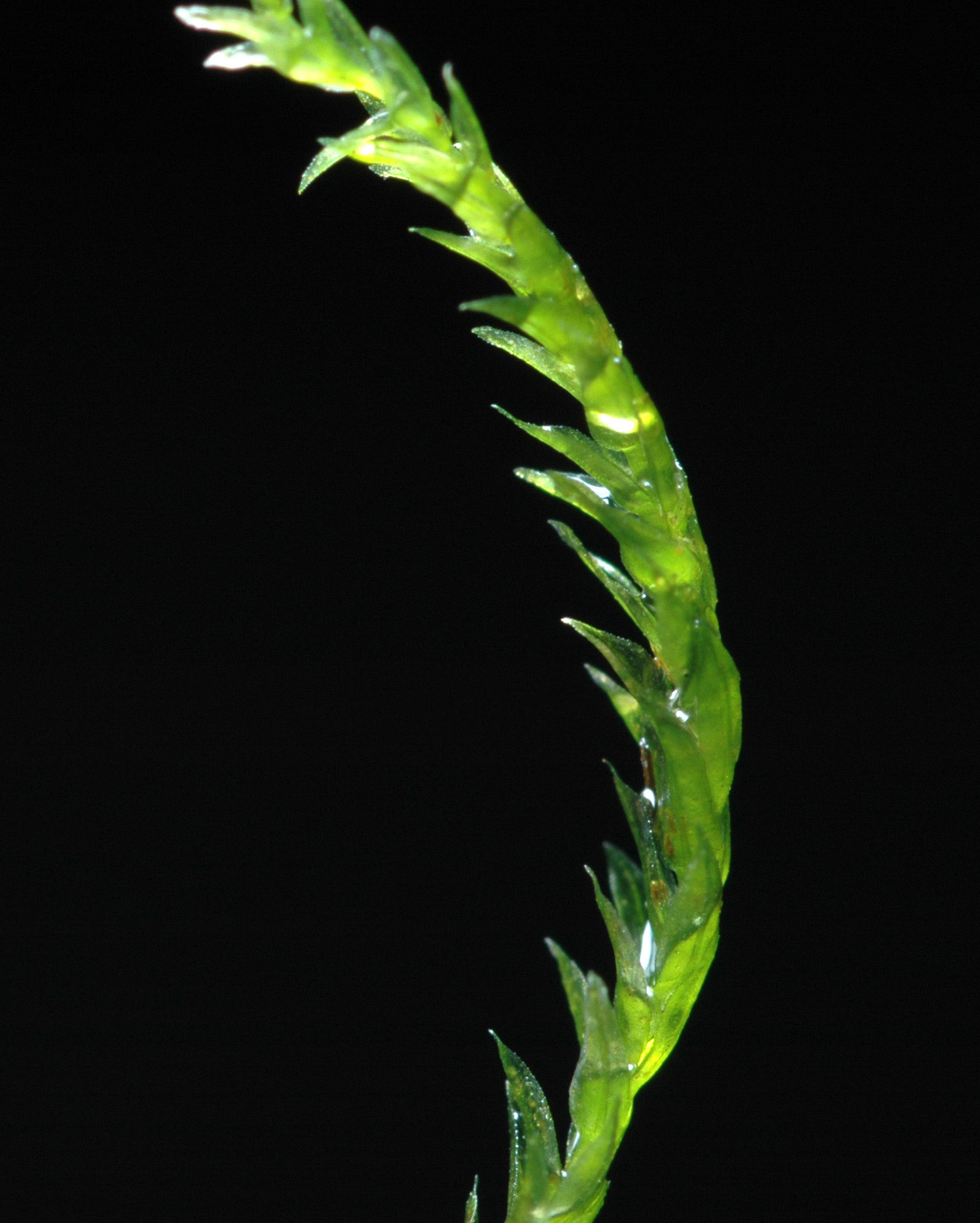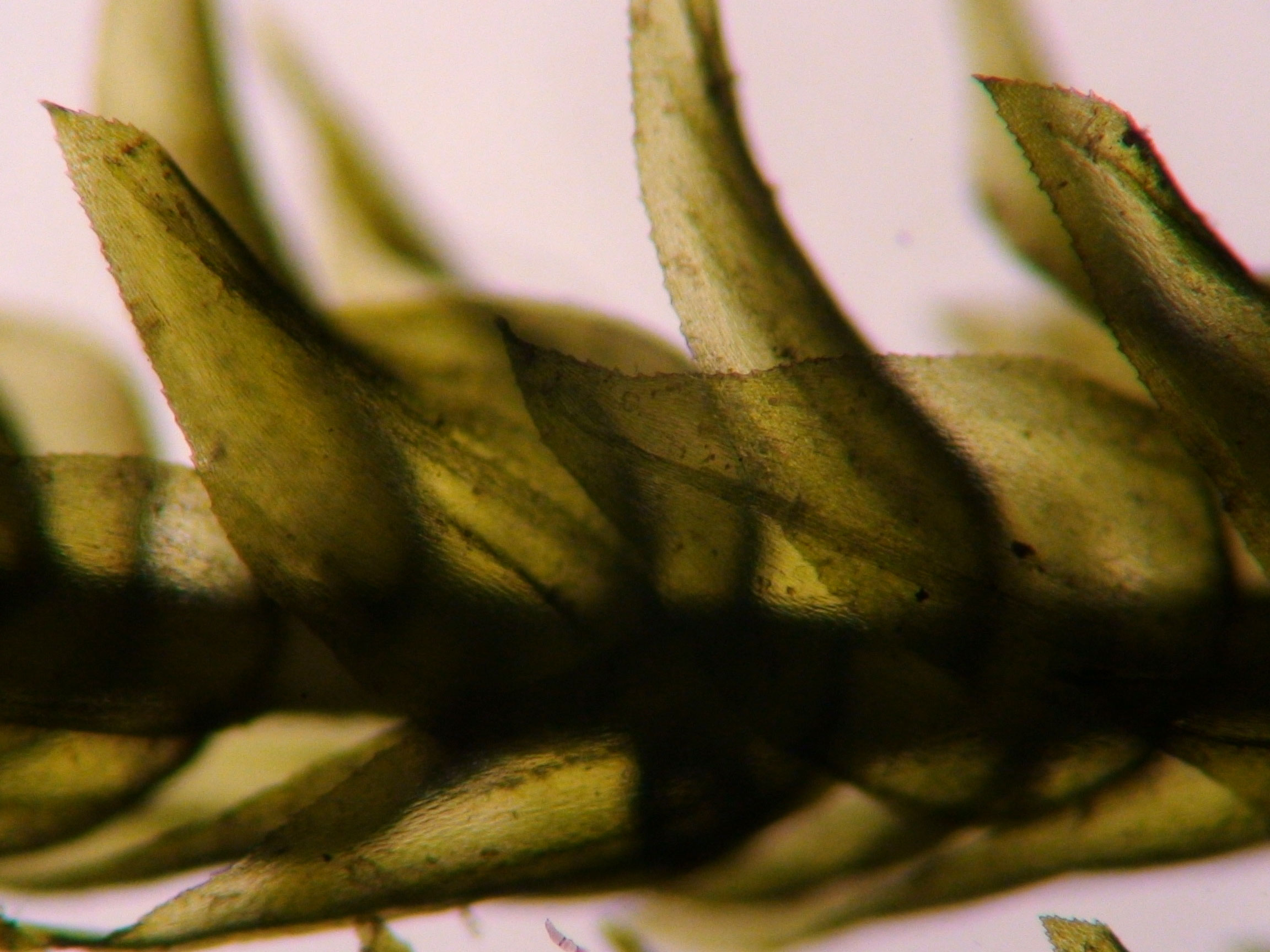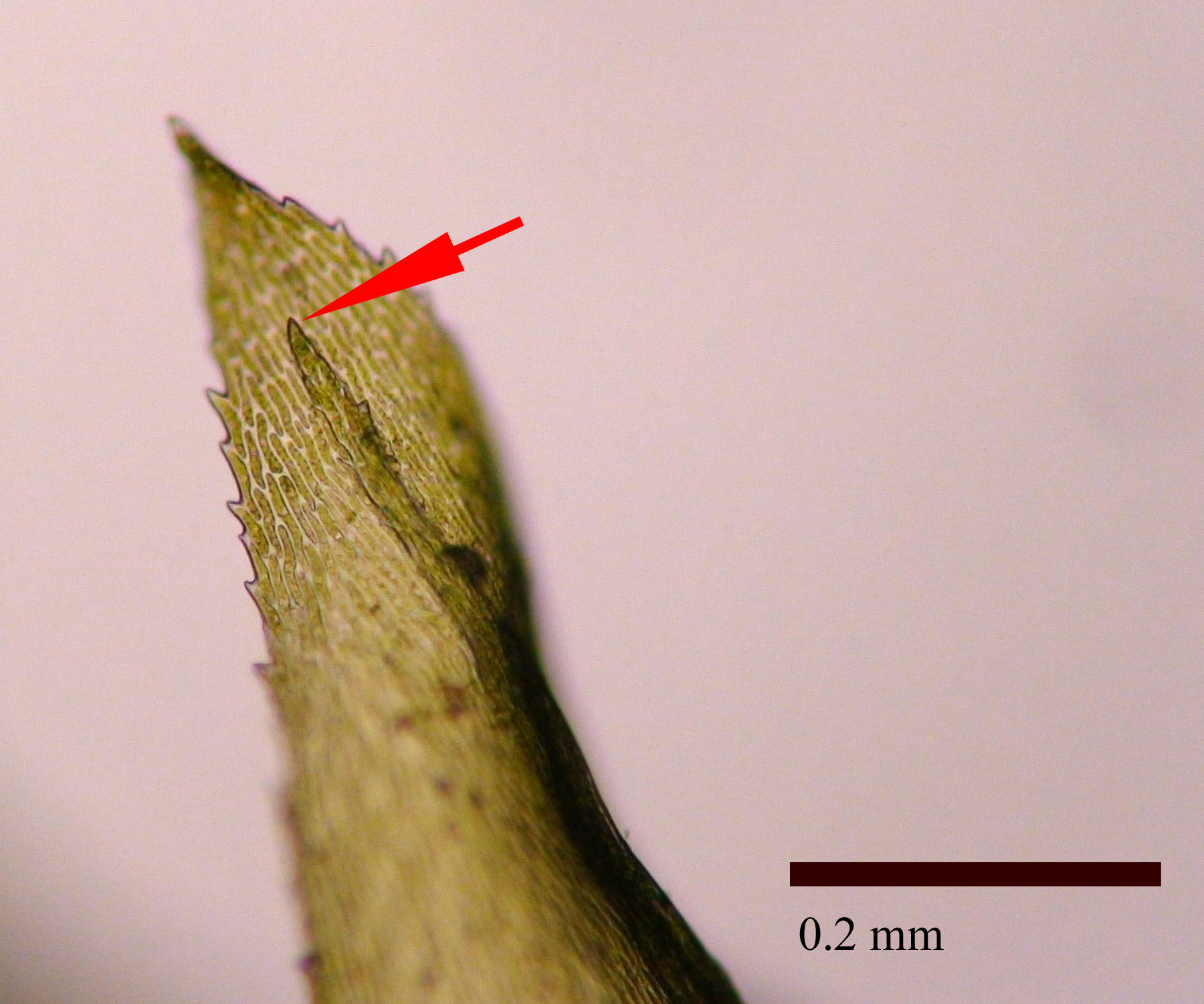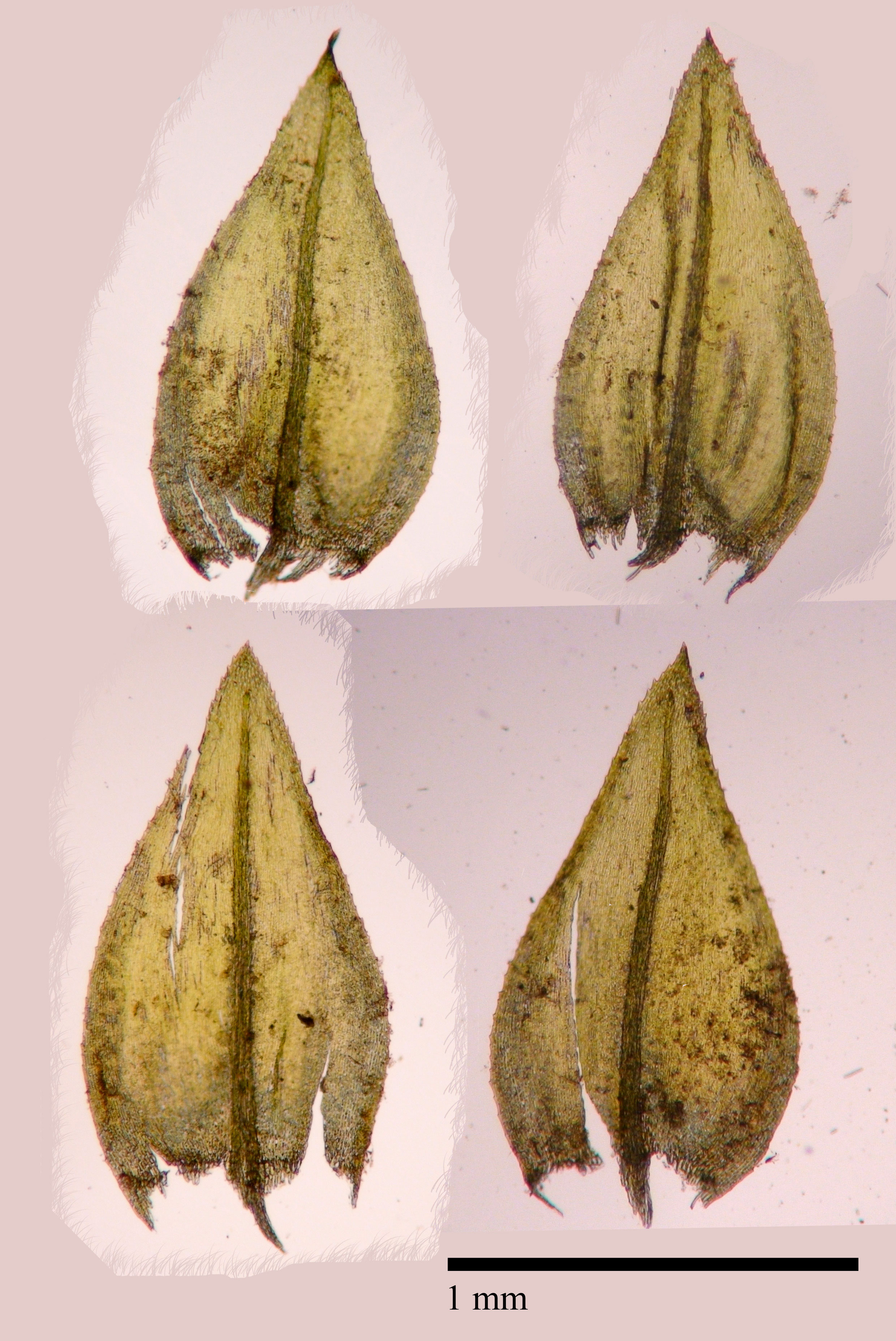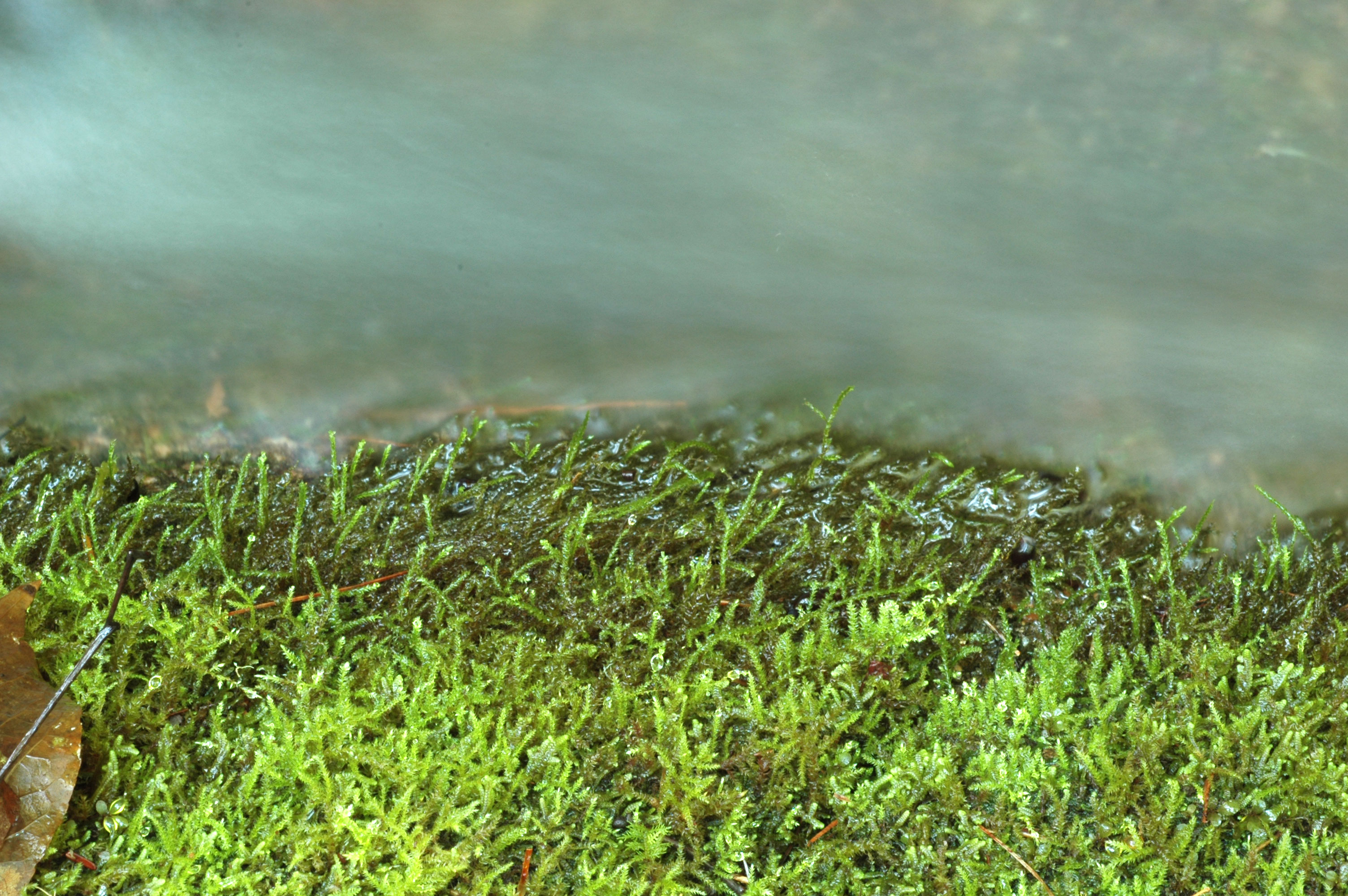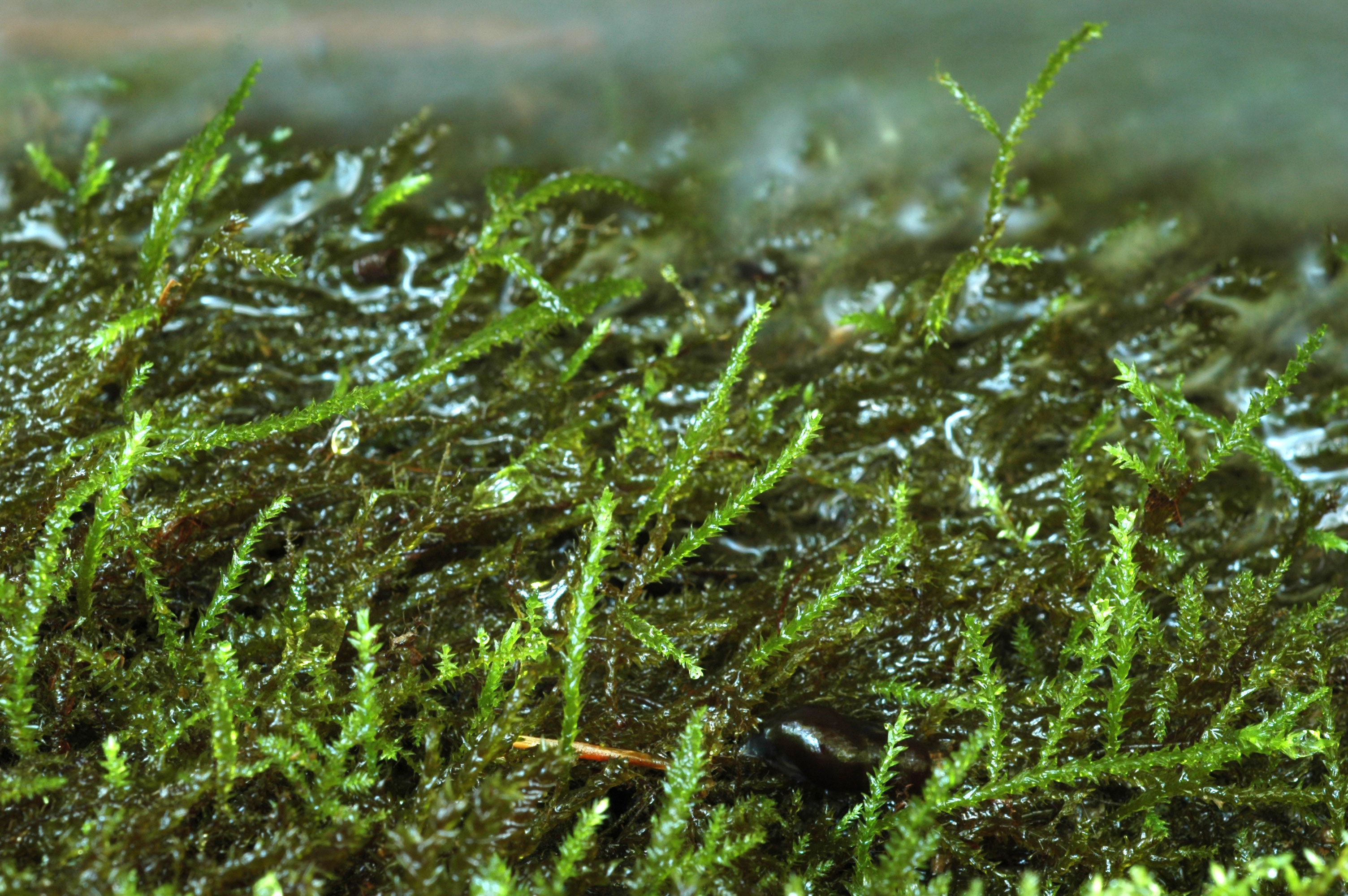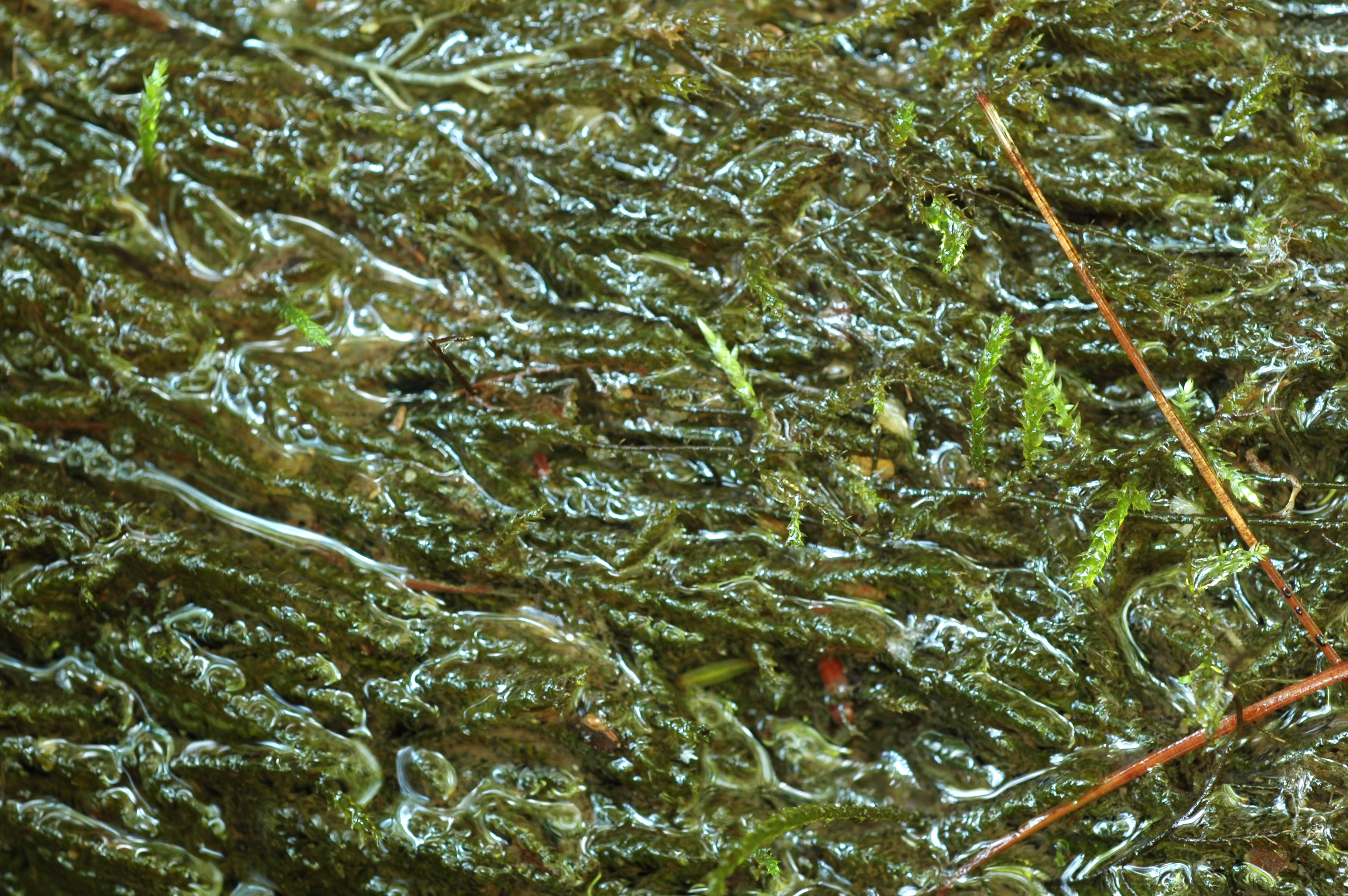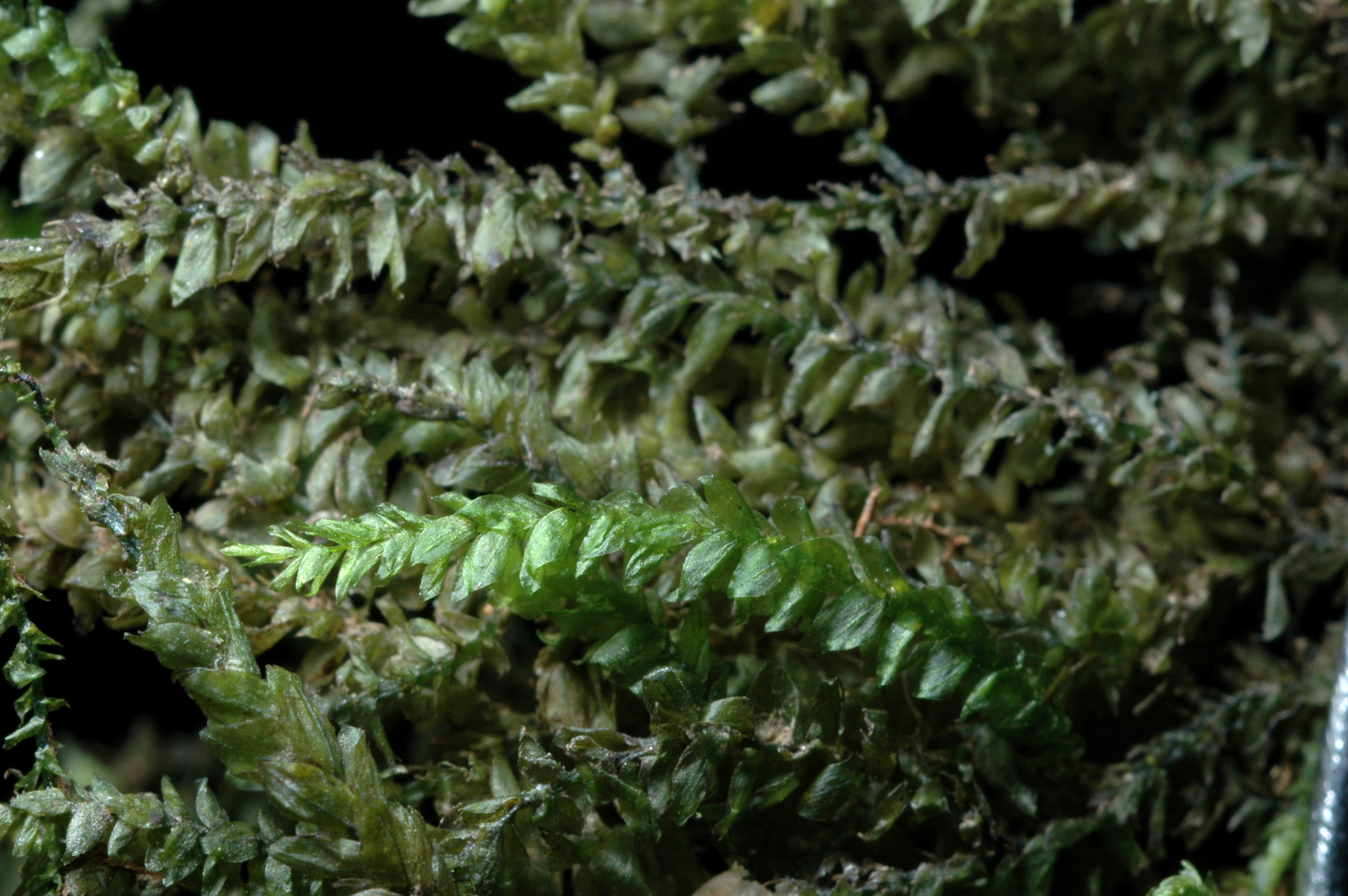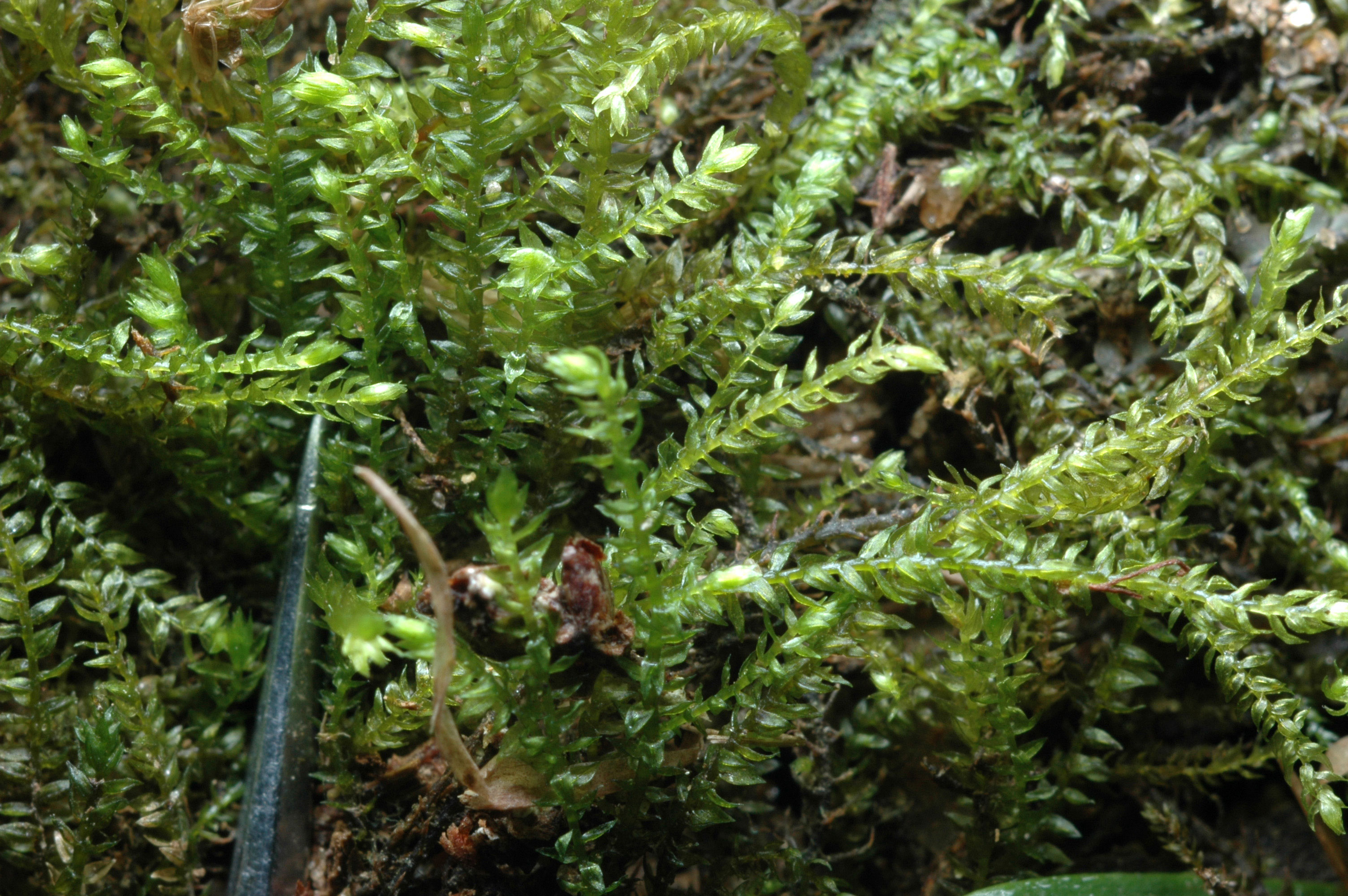Donrichardsia pringlei (Cardot) Huttunen and Ignatov
Family: Brachytheciaceae
Synonyms
Eurhynchium pringlei (Cardot) H. A. Crum and L. E. Anderson
Oxyrrhynchium pringlei (Cardot) J. T. Wynns
Platyhypnidium pringlei (Cardot) Broth.
NatureServe Conservation Status
G2G3
Distribution
North America. U.S.A. (Arizona, California, Georgia, North Carolina, South Carolina). Mexico. Central America. (Ignatov 2014; Wynns et al. 2009).
Habitat
"In the eastern United States Donrichardsia pringlei is restricted to deep, humid escarpment gorges of the southern Blue Ridge Mountains. It grows both in shady seeps and in the swift current of wide streams" (Wynns et al. 2009, p. 796). Based on a review of on-line herbarium database records and published accounts, D. pringlei is not found above 2000 ft. in elevation in the southern Appalachians. Wynns et al. (2009, p. 796) state it is "more abundant at lower elevations, especially at 300–500 m [1000 – 1600 ft]."
Donrichardsia pringlei grows either as an aquatic moss found at or under the water surface or on flat boulders above the water level in deep, shaded gorges (Crum and Anderson 1981). As pointed out by Wynns et al. (2009), D. pringlei (along with Platylomella lescurii) favors sandy sediment trapped in rock crevices of submerged rocks.
Brief Description and Tips for Identification
Donrichardsia pringlei (Appalachian material) is a moss of moderate size growing in wet mats that are brown to blackish in the older portions that lie against the substratum; the upper portions of the mats are green with slightly curved, ascending branches. Ascending branches are up to 2 cm long and bear leaves that are about 1 mm long. Leaves are more or less pointing in the same direction (generally pointing to one side of the stem). Leaves are concave, oblong-ovate to lanceolate with acute to short-acuminate apices. Leaf margins are serrulate more or less to the base of the leaf. Leaves possess a strong costa that extends to within a few cells of the leaf apex; the costa ends in a spine that projects from the dorsal (abaxial) leaf surface.
Dioicous. Sporophytes and gametangia unknown in the Southern Appalachians.
Wynns et al. (2009) recognized five forms of Donrichardsia pringlei (as Oxyrrhynchium pringlei ) and suggested tentatively that these could be expressions of more than one species. The Appalachian populations constitute one of the five and are unique in being uniformly sterile (no gametangia produced) with small leaves (less than 1.3. mm long) that are generally homomallous (pointing in the same direction).
When well developed, Donrichardsia pringlei can be reliably identified in the field with a hand lens. Yet, some populations may be difficult to know with certainty in the field as plants may occur largely as dark, wiry stems with eroded leaves and then resemble other eroded, aquatic mosses. When only a few, small green shoots are present, the plants cannot be reliably distinguished with a handlens from forms of Platylomella lescurii (=Sciaromium lescurii) or Rhynchostegium aquaticum (=Platyhypnidium riparioides and =Eurhynchium riparioides in Crum and Anderson 1981), species that co-occur with D. pringlei and undergo similar erosion of green shoots.
Donrichardsia pringlei is generally smaller than Rhynchostegium aquaticum and lacks the wide spreading leaves of the latter. Both species may possess a spine at the back of the costa but the costa is considerably longer (extends further towards the leaf tip) and more prominent in D. pringlei. Rhynchostegium aquaticum tends to have leaves that are more broadly ovate in contrast to the oblong-ovate to lanceolate leaves of Donrichardsia pringlei. D. pringlei is larger than Platylomella lescurii and lacks the well-developed, thickened leaf border of the latter. Platylomella lescurii does however have curved leaves and a strong costa, characters that could lead to confusion with D. pringlei which is otherwise a very different aquatic moss.
Salient Features
- Costa extends nearly to apex
- Leaf apex acute, never acute-to-obtuse as in R. aquaticum
- Leaves generally erect, sometimes somewhat homomallous, never wide-spreading as can be the case in R. aquaticum
- Leaf margin serrulate all around
- Sporophytes unknown regionally
- On wet rocks in and along streams restricted to low elevation mountian gorges
The first character in the list above is the most reliable feature for distinguishing the species from Rhynchostegium aquaticum with which it may occur.
References
Crum, H. A., and L.E. Anderson 1981. Mosses of Eastern North America (Vol. 2). Columbia University Press.
Ignatov, M.S. 2014. Donrichardsia. In: Flora of North America, North of Mexico 28: 435-436.
Wynns, J. T., Keith, J. N., Murrell, Z. E., McFarland, K. D., and Buck, W. R. 2009. Studies on aquatic Oxyrrhynchium (Brachytheciaceae), with an emphasis on O. pringlei n. comb. The Bryologist, 786-803.
Acknowledgment
Some text and images on this page were originally prepared for the Georgia Department of Natural Resources in 2010, contract number 605-090427 with Paul G. Davison and used here with permission.


